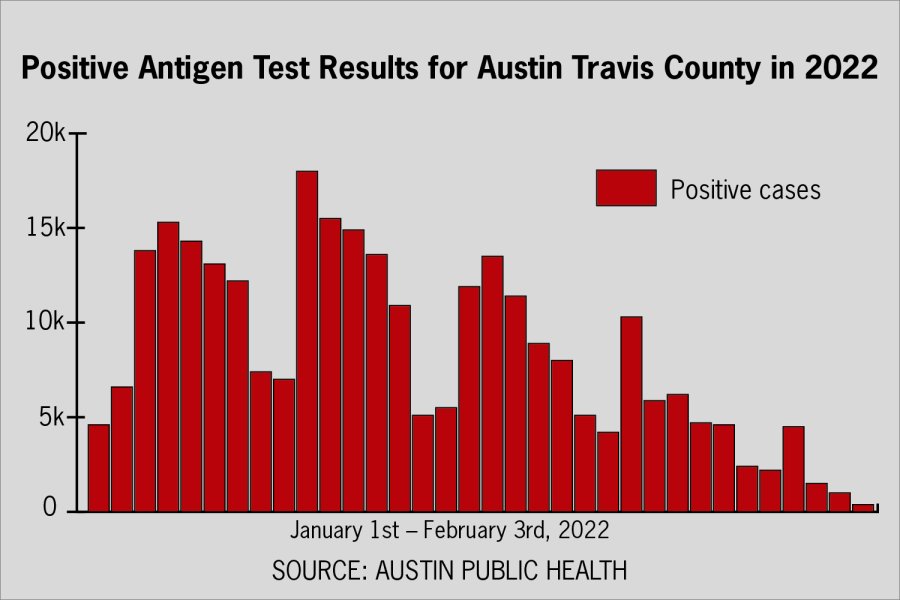UT students express concern over in-person classes despite improving COVID-19 numbers
February 15, 2022
This article first appeared in the Feb. 11, 2022 flipbook.
Nearing the end of the second week of in-person classes, the UT-Austin COVID-19 dashboard reported an estimated 373 active COVID-19 cases on campus as of Feb. 8, with a positivity rate of 2.44% among students, faculty and staff over the past seven days based on Proactive Community Testing.
At the end of January, the combined weekly positivity rate among students, faculty and staff was 5.4%. A week before, the combined positivity rate was 7.5%, according to the dashboard.
“We did see a high number of asymptomatic testing on the Monday following (the winter storm last weekend),” said Terrance Hines, executive director and chief medical officer for University Health Services. “But the overall positivity trends still continue to move in the right direction.”
Hines said UHS could not test students Thursday and Friday due to the weather. He also said UHS has seen an overall improvement in Universitywide and citywide cases in the past weeks.
“Probably the most important indicators on the city dashboard, which are hospitalizations, ICUs, ventilators — those numbers do tend to lag a bit behind the other numbers,” Hines said. “But fortunately, those are also going in the right direction.”
The University restarted in-person classes Jan. 31 after beginning the first two weeks of the semester virtually, which some students said caused anxiety for them. Social work senior Lilly Stoppa said she wishes she had a say in whether she could attend her classes virtually or not.
“I went from completely being virtual at home in Houston, not going out at all, to here, being everywhere now,” Stoppa said. “And I felt like taking care of my health and well-being was kind of just out of my hands now. It was just up to chance now whether or not I was going to catch anything.”
Advertising senior Paige Gifford, whose underlying health conditions place them in a high-risk category, said they became worried about one of their classes when they discovered it would take place in a smaller lecture hall with no capacity for an empty seat between each student.
“It’s a lecture hall with 190 people in it,” Gifford said. “I’m sitting right next to people. Those people aren’t even wearing masks. And I have somewhat boosted immunity now because I am vaccinated, and I’ve had (COVID-19). So it’s not as big of a concern. But prior to getting (COVID-19), I was at very high risk for getting it in that situation.”



